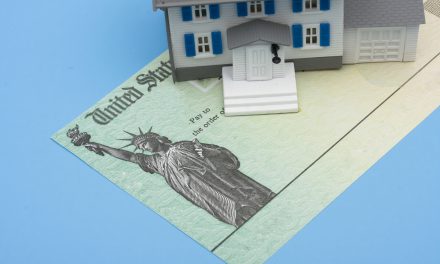This article explains how lenders stand to profit from recent changes to HAMP and highlights how homeowners are less likely than lenders to receive aid.
The federal government announced it will be using $50 billion of the Troubled Asset Relief Program (TARP) funds previously lent to banks to help distressed homeowners and lenders reach more effective, long-term mortgage modification solutions. The $50 billion from TARP will go to lenders and servicers who modify mortgages and investors who permit lenders to cram down securitized home loans in their portfolios.
The TARP aid will be spent on both creating new incentives and beefing up existing incentives for lenders, servicers and homeowners to arrange a mortgage modification, including:
- providing assistance to unemployed homeowners in the form of reduced monthly mortgage payments for three to six months;
- facilitating the refinance of underwater mortgages with emphasis on lender reduction of principal;
- extending the Home Affordable Modification Program (HAMP) to homeowners with loans insured by the Federal Housing Administration (FHA) and every homeowner filing a bankruptcy petition; and
- helping homeowners relocate to more affordable housing after a short sale.
Servicers and holders of second liens who agree to mortgage modifications, principal reduction and even short sales will now receive more taxpayer money to do so. In addition, the plan limits how quickly a homeowner can be foreclosed on, requiring borrowers to be considered and denied access to HAMP before permitting the lender to foreclose.
New HAMP enhancements must be seen for what they are: subsidies for lenders funneled through distressed homeowners and disguised as:
- mortgage assistance for unemployed and bankrupt homeowners;
- rewards for lender compliance with government goals to reduce mortgage principal; and
- so-called “relocation assistance,” which is actually key money the government will pay to foreclosed homeowners and short sellers to get them out of their houses – funds lenders traditionally pay in exchange for an owner vacating the premises after foreclosure.
The stated goal of HAMP is reduction of the homeowner’s monthly mortgage payment to 31% of his income – considered a fundamental threshold of mortgage payment capacity. To achieve lower payments, lenders are asked to consider reducing each homeowner’s loan-to-value (LTV) ratio by “writing-down” the principal balance. Poor accountability – no current write-off of principal – will ensure the lenders make all the gains with little to no sacrifice.
Homeowners will get temporary relief in the form of temporarily forgotten (but not forgiven) principal sufficient to bring the loan-to-value (LTV) ratio down to 115%. Unamortized interest and late fees which have accrued and been added to the loan balance will similarly find their way off the new loan payment – again, temporarily. Both accounting maneuvers are used to lower the amount of the interest bearing principal “on paper” in order to lower the amount of the monthly payment to 31% of gross income.
In exchange for lowering homeowners’ monthly payments, HAMP will give lenders as much as 21 cents of TARP money for every dollar of reduced principal. But to call it “principal” or “written-down” is misleading.
Take for instance Bank of America’s (B of A) recent press release touting its HAMP-related mortgage modification plan. In it, the too-big-to-fail lender commits to a $3 billion principal reduction program for homeowners at least 60 days past due on negatively amortizing adjustable rate mortgages (ARMs) with LTV ratios exceeding 120% of the home’s current market value.
For each distressed homeowner selected for this program, B of A will determine the present value of the owner’s home and establish an LTV. They will then bifurcate the homeowner’s loan, moving unpaid interest and late fees off to the side into a non-interest bearing principal account. This accounting technique will give the appearance that the loan balance has been reduced and the LTV is nearer to 100%. But those amounts of separated, non-interest bearing principal are not forgiven.
In exchange for the homeowner making the payments during the initial three-year period, HAMP wants lenders to forgive principal in equal installments over the three-year period. But B of A’s plan calls for the homeowner’s ARM loan to be transformed into something far less helpful at the end of the three-year period: a price level adjustment mortgage (PLAM).
When a homeowner enters the PLAM stage of B of A’s loan reduction program, he loses any of his home’s upward price movement that occurs after entering the loan reduction program – he relinquishes his ownership hedge against inflation. As commonly believed by most real estate market onlookers, housing prices are on the brink of rising again. If homeowners come out on the other side of B of A’s loan modification program and their home’s value has risen, then the lender will dump all the unpaid interest and fees previously set aside back on top of the principal loan balance, with the payment reset to amortize the added principal.
Thus, B of A is but one example of how lenders will use new HAMP revisions to recoup the losses suffered for widespread loan origination negligence lenders practiced during the Millennium Boom. Lenders have ultimate control over not only establishing the value of the home for the program and, thus, the loan’s LTV, but also the power to decide when (not if) the temporarily suspended interest and late fees will be included when factoring in the monthly mortgage payment. “Written-down” does not mean “forgiven,” nor does it mean “forgotten.” It simply means the lender’s accountants will perform the necessary magic to reduce the monthly payment temporarily to ensure the government pays up on the HAMP lender subsidy. [For more information on Bank of America’s mortgage modification plan, please see the April 2010 first tuesday article Lenders attempt to lock homeowners into paying on underwater homes]
Re: Housing Program Enhancements Offer Additional Options for Struggling Homeowners from the Department of Housing and Urban Development; and for details on HAMP enhancements, see Making Home Affordable Program Enhancements to Offer More Help for Homeowners














So let me get this straight. B of A is evil for not writing down balances when property values decline; and they are evil if they write down the balance in a declining market while asking to participate in an up market up to the amount of their write down. Using this logic, it is the homeowner that looks to be the greedy party, not the bank.